
All categories
Featured selections
Trade Assurance
Buyer Central
Help Center
Get the app
Become a supplier

(664 products available)













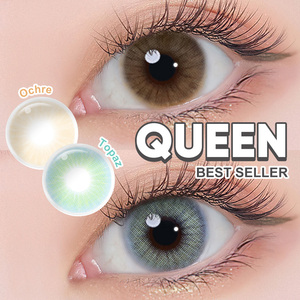

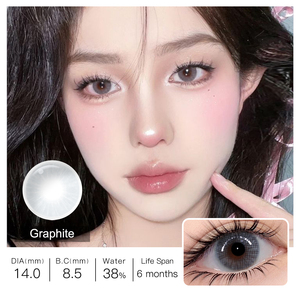
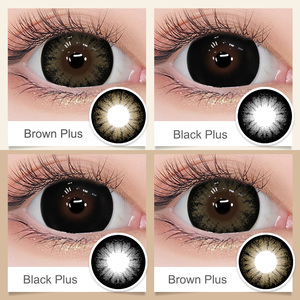
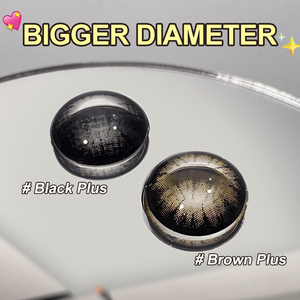
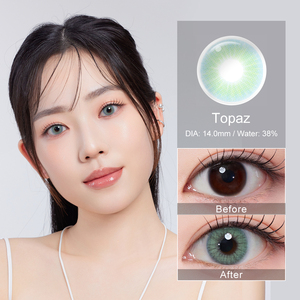

















The 15-mm-diameter contact lenses are available in diverse models. They range from prescription lenses for vision correction to cosmetic and specialty lenses. Each caters to specific customer needs. Below are the most common types:
Hydrogel Lenses
Hydrogel lenses are widely used due to their softness and comfort. They are manufactured from a water-containing plastic that keeps the lenses moist and supple. Besides, a 15-mm hydrogel contact lens provides a good balance between vision and comfort. It is suitable for daily wear. Many customers prefer these lenses since they are easy to fit and are available in various prescriptions.
Silicone Hydrogel Lenses
Silicone hydrogel lenses offer more oxygen permeability than regular hydrogels. This makes them healthier for extended use. These lenses are ideal for clients who require longer wear. These include those with busy lifestyles. The 15-mm size ensures a larger surface area for better comfort and hydration.
Toric Lenses
Toric lenses are designed for individuals with astigmatism. They have different optical powers in various orientations to correct vision. A 15-mm toric contact lens provides stability and clarity for those with irregular corneas. It does so while ensuring comfort. It is the go-to option for many who need specialized vision correction.
Scleral Lenses
These lenses have a larger diameter and are designed for individuals with severe vision problems. They are made to vault over the cornea. In doing so, they provide a smooth optical surface. A 15-mm scleral lens molds to the eye and creates a cushion of fluid beneath it. This makes it invaluable for those with conditions like keratoconus or a corneal transplant.
Multifocal Lenses
These lenses provide multiple prescriptions in one lens to correct near and far vision. They are particularly beneficial for elderly clients who need help with different vision ranges. A 15-mm multifocal contact lens is designed for easy adjustment. This offers a smooth transition between focal points. Doctor's recommendations commonly feature these lenses for presbyopic wearers.
Cosmetic Colored Lenses
These lenses are used to change the eye color or enhance it, even with no vision correction required. They are made with different color tints. They range from subtle to vibrant, depending on customer intention. A 15-mm cosmetic contact lens ensures a good fit and comfort throughout the day. It provides clarity and aesthetic value. These lenses are popular among customers seeking visually appealing effects.
A 15-mm diameter contact lens is designed with durability in mind for sustained performance. Its attributes make it 'user-friendly' and, at the same time, help increase its lifespan:
Premium Materials
These lenses are normally made with premium-quality materials. They range from medical-grade hydrogel polymers to silicone hydrogels, which provide comfort and durability. Silicone hydrogel lenses are especially strong, allowing more oxygen to pass through while minimizing damage from daily wear and tear.
Oxygen permeability
Oxygen permeability is a key factor in a contact lens's durability and health. A 15-mm lens is often made using a silicone hydrogel material that allows oxygen to pass through. This keeps the eye hydrated and prevents the lens from drying out. Oxygen permeability minimizes protein buildup on the lens, thereby reducing frequent exchanges and extending the lens's life.
Lens Shape and Design
The 15-mm diameter allows a wider surface area for the lens to cover the eye. This offers more comfort and stability during wear. Usually, they are carefully designed to maintain its shape even when in use. This helps preserve vision correction capability apart from the overall integrity of the lens. Also, the larger size ensures more effective tear film coverage. This reduces the chances of lens dryness and brittleness, especially in extended wear scenarios.
UV Protection
Some 15-mm diameter contact lenses are equipped with UV-blocking technology that protects the eyes from harmful rays. These lenses' durability is increased since they provide a protective function against common environmental hazards such as sun damage, dirt, and debris. This feature reduces unwanted frequent swaps in conditions that are hazardous to the lenses.
Proper Storage and Maintenance
Storing 15-mm lenses in an appropriate contact lens case with multipurpose solution helps keep them wet and free from microbes. This prevents any external contaminants from affecting their durability. Regular cleaning also minimizes protein deposits and debris that can damage the lens over time.
When selecting a 15-mm diameter contact lens, one must consider various vision correction and comfort needs. Each plays a vital role in one's satisfaction with the lenses. Below are some key factors to consider when choosing a lens:
Material
The 15 mm contact lenses are manufactured using different materials. They include hydrogels and silicone hydrogels. Each has its unique benefits. Hydrogel lenses offer great comfort and moisture and are ideal for people who have dry eyes. In the case of silicone hydrogels, these lenses are made for better oxygen flow through the lens. It helps maintain eye health, especially during prolonged wear.
Fit and comfort
The fit of the lens is of utmost importance. An incorrectly fitted lens can lead to discomfort and blurred vision. To avoid this, have an eye care professional take measurements of the eye to get the right curve and diameter. This will ensure the lens sits properly on the eye. Also, consider the lens's water content. Higher water content offers more moisture but may lead to more fragility.
Type of lens
15 mm contact lenses come in different kinds of corrective lens systems. These include toric lenses for astigmatism and multifocal or bifocal lenses for presbyopia. Toric lenses have different power areas to correct astigmatism. They incorporate stabilizing designs. They ensure the lens orients correctly on the eye. Multifocal lenses use different power areas for near and far vision. They incorporate either a-distance center or near-distance center, which will help the optician choose the most ideal lens type and minimize discomfort.
Replacement schedule
Contact lenses vary in replacement schedules. These include daily, bi-weekly, and monthly lenses. Daily disposables are the most hygienic. They offer a fresh pair each day. Bi-weekly and monthly lenses are more economical. They require regular cleaning and proper storage. Select a schedule based on lifestyle and eye care needs.
Consultation with an eye care professional
One of the most critical aspects of choosing the right lens is having a consultation. An eye care specialist will provide expert recommendations based on individual needs. They will consider eye health, lifestyle, and vision requirements. Do not skip this since an expert opinion has good benefits when selecting contacts.
15 mm diameter contact lenses are versatile. They cater to diverse vision correction requirements while offering comfort and clarity. Below are several ways this particular lens can be applied:
Corrective Vision
Traditional Contact Lenses: These lenses are used to correct nearsightedness, farsightedness, and astigmatism. The 15 mm size provides a stable fit on most eyes. This results in clear vision for everyday activities like reading and driving.
Extended Wear
People with busy schedules like to wear lenses for long hours. They opt for 15 mm silicone-hydrogel contact lenses because they allow more oxygen through. This keeps the eye healthy and comfortable, even after long hours of wear.
Special Needs Vision Correction
15 mm scleral contact lenses are designed for people with unique vision problems. Problems like keratoconus, corneal scarring, or irregular astigmatism. The larger diameter creates a cushion over the affected area. It helps provide clarity and comfort for those with advanced eye conditions.
Cosmetic Purposes
Colored contact lenses in a 15 mm diameter are popular for people who want to change or enhance their eye color. These lenses use different color pigments. They range from subtle to bold. One of the most popular is the hydrogel color contact lens, which offers a more comfortable feel.
Digital Device Eye Strain Solutions
With increasing screen time, many find eye strain a common problem. Presbyopia multifocal contact lenses are designed to reduce digital eye strain. The 15 mm size allows a larger viewing area for clarity while switching focus. It enables people to see screens and print clearly.
Fashion and Photography
15 mm diameter contact lenses are also favored in the fashion industry. They help models and actors achieve for-all gaze aesthetics. This is especially true for hydrogel colored contact lenses. They provide both clarity and comfort during prolonged use under various lights. The lenses are also widely used in photography to create stunning visuals with different eye colors.
People usually replace these lenses daily, bi-weekly, or monthly. This depends on the lens material and type. For example, daily disposables are replaced every day. Bi-weekly and monthly lenses are replaced after weeks or months with proper cleaning.
15 mm silicone hydrogel contact lenses are designed to allow more oxygen to reach the eye. This makes them safe for overnight wear if the lens is marked as extended wear. Always consult an eye care professional for personalized advice.
No. 15 mm toric contact lenses are designed for comfort. They are made with advanced materials. These materials ensure adequate moisture and oxygen flow to the eye. Proper fitting will ensure stability and comfort throughout the day.
It is advised to ONLY use colored contact lenses that have been prescribed or recommended. These contacts should be obtained from reputable brands. They should come in a 15 mm diameter. These lenses are now made with more hydrogels. It provides comfort and safety for all users.